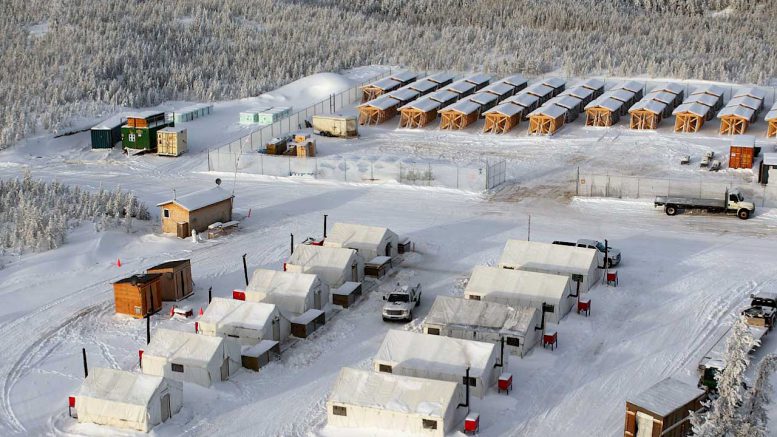An underground-only feasibility study for Fission Uranium’s (TSX: FCU; US-OTC: FCUUF) Patterson Lake South (PLS) project in Saskatchewan has increased its mine life from seven to 10 years while improving its economics.
Located on the southwest rim of the Athabasca basin and 160 km north of La Loche, Sask., PLS consists mainly of the Triple R deposit, a set of five mineralized zones sitting between 50 and 300 metres below the surface, over a strike length of 3.2 kilometres.
The new study, announced in a news release by British Columbia-based Fission on Tuesday, also lowers PLS’ capex by about 2% to $1.16 billion from $1.2 billion estimated in a 2019 prefeasibility study that looked only at an underground mining scenario.
“That’s a pretty remarkable feat if you think about it because for the last two or three years we’ve been in a high inflationary environment,” Fission CEO Ross McElroy told The Northern Miner. “The expectation was that capex costs would be significantly higher. I think that speaks to changes we did between the prefeasibility study and the feasibility study, and a more efficient and smarter development strategy.”
As an example of better development, McElroy cited the decision in the study to install a traffic control system at PLS rather than diverting the nearby highway around the tailings management facility.
“Mine trucks would be controlled on the highway there. Things like that where we could do things better and less expensively. And that sits a lot better with the local population because they would rather see the highway stay where it is rather than divert it,” he said.
The study outlined probable reserves of 3 million tonnes of uranium grading 1.41% U3O8 for 93.7 million lbs. of contained metal, up from the 2.3 million tonnes grading 1.61% U3O8 for 81.4 million lb. of contained metal in the earlier study.
The higher reserve came mainly from the addition of the R840W orebody, one of Triple R’s five zones. The feasibility study only included indicated resources from the R780E, R840W and R00E zones, Fission said in the release.
McElroy added that R840W wasn’t included in the prefeasibility study.
“We put some additional holes in the R840. We were successful in converting that to indicated. That entire zone was moved into the economic study. That gave us the additional resource which turned into additional mine life,” he said.
‘Staggering’ value increase
Other highlights of the new study include a higher after-tax internal rate of return of 27.2%, up from 25%, and a higher after-tax NPV of $1.2 billion at an 8% discount, up from $561 million at a 10% discount.
McElroy said the increased NPV was made possible by higher uranium prices and the growth in PLS’ resource.
“[We were] able to increase our NPV by some 70%. That means our net profit bottom line result is 70% better than what we thought it would be three years ago. It’s quite a staggering increase in value,” he said.
Fission’s next steps for the year will be starting on PLS’ environmental impact assessment and advanced design work, which it hopes to start around September.
On Jan. 12, the company announced it had signed a capacity funding agreement with the Métis Nation of Saskatchewan, about two months after it inked the same deal with the Birch Narrows Dene Nation, one of several Indigenous groups living in the region of PLS with whom Fission has signed agreements.
Riding the momentum from the new study, the CEO says he’s confident Fission is now on a “pathway to production” with PLS.
“We’re in the right jurisdiction. This is a province that is very pro-development. If you take the right steps, build good relationships with the local Indigenous groups and you have the economic horsepower to merit development, and we have all those things. That’s why I think we’re going to be a major contributor of uranium to the global supply in the relatively near future,” McElroy said.
He confirmed the company still estimates a three-year construction period for the project, starting in 2026, with production slated for 2029.
In a research note, Alexander Pearce of BMO Capital Markets took a more conservative stance on PLS’ capex than McElroy, saying it’s “essentially unchanged” from the $1.2 billion estimated in the PFS.
However, Pearce said the study “represents a major de-risking milestone for the company.”
Fission shares declined from 88¢ on Tuesday when results of the FS were released to 84¢ when markets closed that day. The company’s shares were trading at 82¢ on Thursday, in a 52-week window of 56¢ and $1.14, giving Fission a market capitalization of $576.9 million.


Be the first to comment on "New FS boosts NPV at Fission Uranium’s Patterson Lake project by 70%"